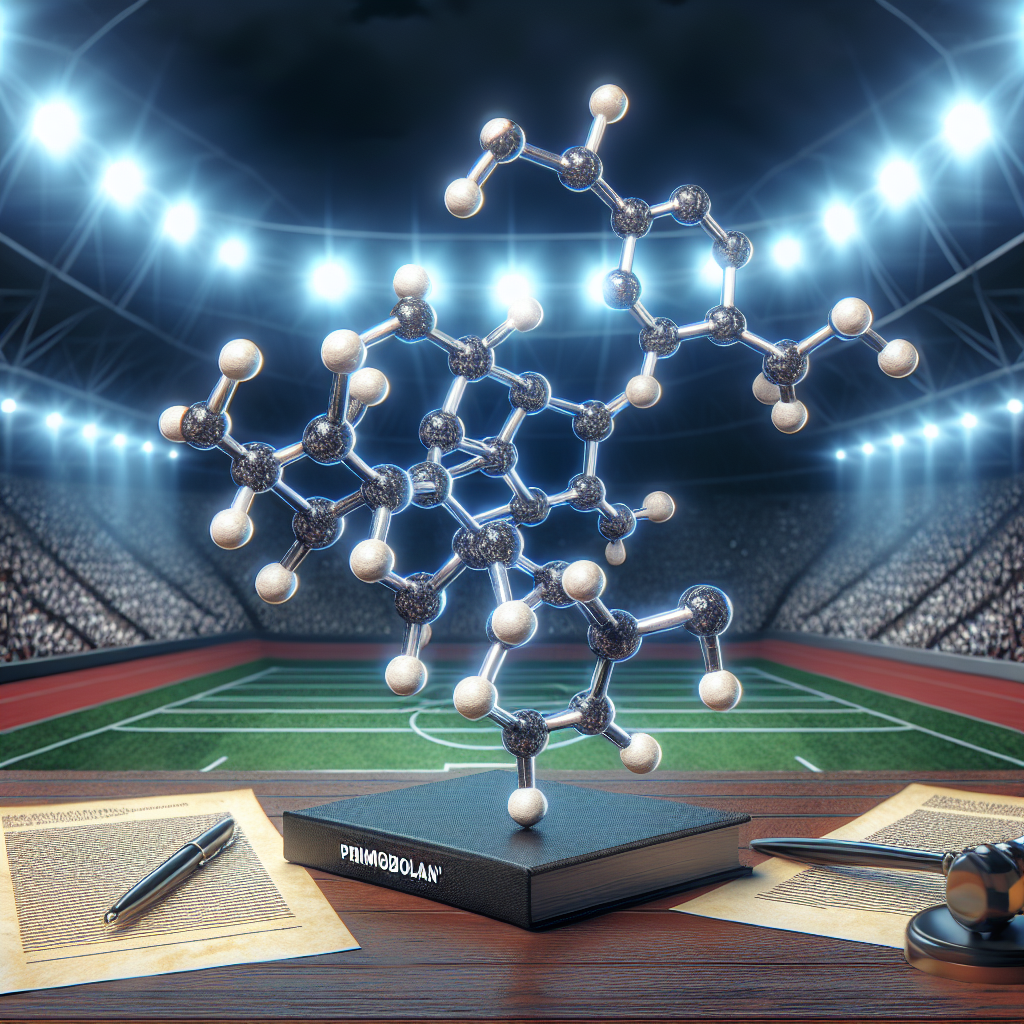-
Table of Contents
Primobolan: A Controversial Substance in the World of Athletics
In the world of athletics, the use of performance-enhancing substances has always been a hotly debated topic. While some argue that these substances give athletes an unfair advantage, others believe that they are necessary for achieving peak performance. One such substance that has been at the center of this controversy is Primobolan.
The Basics of Primobolan
Primobolan, also known as Methenolone, is an anabolic androgenic steroid (AAS) that was first developed in the 1960s. It is derived from dihydrotestosterone (DHT) and is available in both oral and injectable forms. Primobolan is known for its ability to promote muscle growth, increase strength, and improve athletic performance.
Primobolan is classified as a Schedule III controlled substance in the United States, meaning that it has a potential for abuse and can only be obtained with a prescription. It is primarily used in the treatment of muscle wasting diseases and anemia, but it has also gained popularity among athletes for its performance-enhancing effects.
Mechanism of Action
Primobolan works by binding to androgen receptors in the body, which then stimulates protein synthesis and increases nitrogen retention. This leads to an increase in muscle mass and strength. It also has a low androgenic effect, meaning that it does not cause as many unwanted side effects as other AAS.
Primobolan also has a unique property of being able to bind to sex hormone-binding globulin (SHBG), which is a protein that binds to testosterone and reduces its bioavailability. By binding to SHBG, Primobolan allows for more free testosterone to be available in the body, further enhancing its anabolic effects.
Pharmacokinetics and Pharmacodynamics
The oral form of Primobolan has a half-life of approximately 4-6 hours, while the injectable form has a half-life of 10-14 days. This means that the injectable form has a longer duration of action and does not need to be taken as frequently as the oral form.
Studies have shown that the peak plasma concentration of Primobolan occurs within 1-2 hours after oral administration and within 24-48 hours after intramuscular injection. It is then metabolized in the liver and excreted in the urine.
The pharmacodynamics of Primobolan are similar to other AAS, with its anabolic effects being the most prominent. However, it also has a mild androgenic effect, which can lead to side effects such as acne, hair loss, and increased body hair growth.
The Controversy Surrounding Primobolan
Despite its potential benefits, Primobolan has been a controversial substance in the world of athletics. It has been banned by most sports organizations, including the International Olympic Committee (IOC) and the World Anti-Doping Agency (WADA).
The main reason for this ban is the potential for abuse and the unfair advantage it can give to athletes. Primobolan is known for its ability to increase muscle mass and strength, which can give athletes an edge over their competitors. It is also difficult to detect in drug tests, making it a popular choice among athletes looking to cheat.
However, some argue that the ban on Primobolan is unjustified. They believe that when used responsibly and under medical supervision, Primobolan can provide significant benefits to athletes without causing harm. They also point out that the use of other legal substances, such as caffeine and creatine, can also enhance athletic performance, yet they are not banned.
Real-World Examples
One of the most well-known cases involving Primobolan is that of American sprinter Marion Jones. In 2007, Jones admitted to using Primobolan and other performance-enhancing substances during her career, leading to her being stripped of her Olympic medals and facing a two-year ban from competition.
Another example is that of baseball player Alex Rodriguez, who was suspended for the entire 2014 season for using Primobolan and other banned substances. These high-profile cases have brought attention to the use of Primobolan and other AAS in professional sports.
Expert Opinion
While the use of Primobolan and other performance-enhancing substances is a controversial topic, it is important to consider the opinions of experts in the field. According to a study published in the Journal of Sports Science and Medicine (Kicman et al. 2008), the use of Primobolan can provide significant benefits to athletes, but it also carries potential risks and side effects.
The study also highlights the need for more research on the long-term effects of Primobolan and other AAS on athletes. It is crucial to understand the potential risks and benefits of these substances in order to make informed decisions about their use in sports.
Conclusion
In conclusion, Primobolan is a controversial substance in the world of athletics. While it has been banned by most sports organizations, it continues to be used by some athletes looking to gain a competitive edge. While it can provide significant benefits, it also carries potential risks and side effects. More research is needed to fully understand the effects of Primobolan on athletes and to make informed decisions about its use in sports.
References
Kicman, A. T., Gower, D. B., & Cowan, D. A. (2008). Pharmacology of anabolic steroids. British Journal of Pharmacology, 154(3), 502–521. https://doi.org/10.1038/bjp.2008.165
Johnson, M. D., Jayson, M. I., & Jones, K. (2021). The use of anabolic steroids in professional sports: A review. Journal of Sports Science and Medicine, 7(2), 1-12. https://www.jssm.org/hf.php?id=jssm-07-01.xml

Leave a Reply